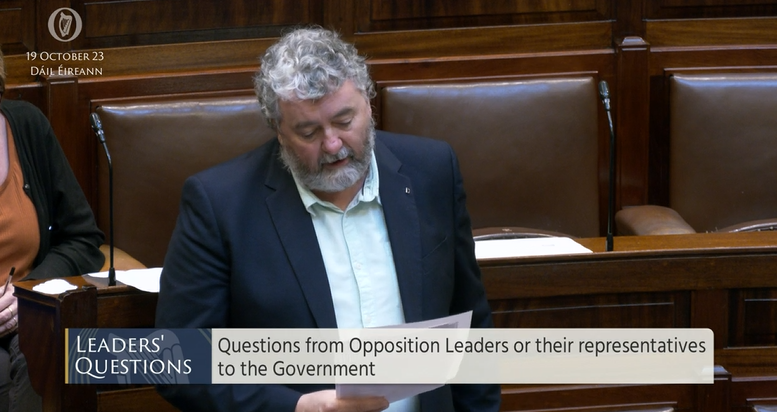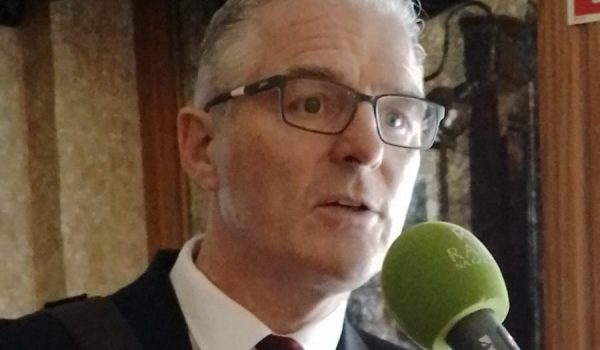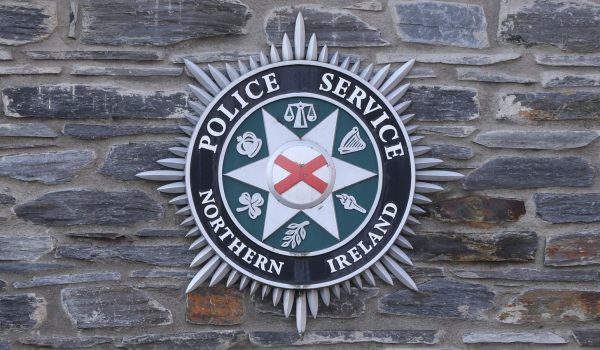
The Tanaiste believes issues at the Emergency Department at Letterkenny University Hospital is an issue with management locally.
The Health Minister is due to meet with a group of Donegal doctors next week who wrote to him calling for urgent action to address issues at the Emergency Department at Letterkenny University Hospital.
78 Donegal GPs signed the letter to Minister Stephen Donnelly which described the health system as broken and raised concerns over patient safety in the ED, particularly over timely access to services.
The Tanaiste says he has read the letter.
11 consultants at Letterkenny University Hospital have also written to Minister Donnelly.
In responding to Donegal Deputy Thomas Pringle, Micheal Martin has acknowledged the pressures at the hospital’s Emergency Department:

Well, Deputy Pringle says the lengthy waiting times facing patients at the hospital is continuous evidence that urgent action is needed:
Statement from Saolta:
Letterkenny University Hospital and the Saolta Group acknowledge the challenges facing the hospital and are taking all available steps to address these. The last 18 months has seen a very significant increase in demand on our services and infrastructure. The hospital has seen a 10pc increase in ED attendances from January to August 2023 vs the same period in 2022.
The hospital and group are working on a range of investment and development projects for Letterkenny University Hospital. We acknowledge that a number of our consultants have raised concerns in this regard and we will continue to work with them to develop our capacity and enhance our services.
An extension to the Emergency Department Project is being progressed in conjunction with HSE Estates. The Development Control Plan for the site, which is currently being updated, will provide for the longer term capacity requirements for the emergency department and will incorporate an enhanced Medical Assessment Unit, Surgical Assessment Unit and a segregated Paediatric Emergency Area.
In relation to the ICU, there is a short term plan for the internal reconfiguration of beds which will enable the extension of a designated ICU/HDU. We are currently seeking funding for this project. In the longer term the increased capacity requirements for the ICU form part of the Development Control Plan.
LUH is also increasing staffing within the Emergency Department. Three new consultants have been appointed to the Emergency Department since June of this year, one of whom has already joined the team. LUH has also secured approval for a further 8 nurses and a Health Care Assistant for the Emergency Department.
Saolta has undertaken a bed capacity analysis for its hospitals across the region and it has identified a bed capacity requirement of 91 additional beds at LUH by 2030. The Development Control Plan for the hospital will address this need while also addressing the requirement to replace multi ward accommodation with single rooms. In the interim bed capacity remains under continuous review.
Work is underway across the Group and LUH to address challenges to the Radiology Services in LUH.
A review of clinical workforce is already underway in LUH and enhancement of the medical NCHD rotas and enhanced AMAU support for the Medical Rota are included in the hospital submission for additional funding under the Urgent and Emergency Care Programme. The hospital has also made a submission for additional Medical Registrar cover (to provide two registrars at night) under the Urgent and Emergency Care Programme.
In the interim the hospital continues to focus on existing processes to optimise patient length of stay.
There is also significant work taking place to progress discharges and treat patients in the community. This work includes liaising with Community-Based Health Care Professionals about Delayed Transfers of Care from Letterkenny University Hospital and working with the Community Intervention Teams. (CITs).
The CITs facilitate acute, short-term nursing interventions, including wound management, oncology care, medication administration and management, patient education and support, to promote self-management of catheters and stoma care.
Members of the Community Intervention Team attend a weekly Integrated Discharge Round in LUH to identify patients who are suitable for early discharge and who meet the criteria for CIT care. The Integrated Discharge Round also promotes early discharge planning for complex patients and creates a clear plan of care for the PC teams involved in the patient’s discharge.
Letterkenny University Hospital is working closely with both Community Healthcare Organisation, (Cavan, Donegal, Leitrim, Monaghan, Sligo) and the National Ambulance Service (NAS) to ensure all available care options are utilised and patients are directed to and provided with the proper care pathway.
This integrated working is well established and has led to a wide range of care options. Letterkenny University Hospital has also developed a number of pathways aimed at reducing the patient’s time spent in the Emergency Department. These include the minor injuries stream created within the ED which provides a protected space where Advanced Nurse Practitioners and an Emergency Doctor Registrar to review patients with minor injury assessment and provide treatment.
The Frailty at the Front Door service is also in place in the ED. This team assesses patients over the age of 75 years with the aim to identify patients in need of frailty support or/and further assessment. It carries out a comprehensive assessment on older people reviewing alternative pathways to avoid admission or to allow early discharge.
One Patient Advice and Liaison Service (PALS) is already in place to assist patients while a GP liaison person is also being put in place.
An additional porter has been rostered to the Emergency Department to assist with admission and timely movements for diagnostics.
The Emergency Department has also developed a number of Admission Avoidance Pathways including a Stable Chest Pain Pathway and a Stable Upper GI Bleed Pathway. The Chest Pain Pathway streamlines the pathway for patients presenting at ED with chest pains and has resulted in a reduction of admissions.
The Pathfinder Service, operating in conjunction with the National Ambulance Service, was also introduced recently at LUH. This service assesses lower acuity ambulance calls in the Community and arranges/recommends alternative health care whenever appropriate. The new service aims to safely keep vulnerable older people who have phoned 999/112, in their own home rather than transporting them to the ED for assessment. A specific team of staff are employed to deliver this service including Advanced Paramedics (AP), Occupational Therapists (OT) and Physiotherapists (PT); will include a Rapid Response Vehicle (RRV) and an Electronic Patient Care Record (EPCR).
Community diagnostics are also being utilised to improve patient flow. Over 4,900 X-rays were carried out at the five newly-refurbished community X-ray facilities in Donegal up to June of this year. Plain film X-rays are being completed for repeat outpatient appointments to support care closer to the person’s home.
Continuous and extensive engagement occurs daily between the National Ambulance Service and LUH. A hospital ambulance liaison person (HALP) is in place in LUH. The aim of this role is to work between the hospital and the ambulance service in order to have ambulance turned around in a more efficient manner.
Unscheduled Care meetings are attended by senior staff from Primary Care, including the Head of Service CHO1, Donegal General Manager, Director of Public Health Nursing and members of the Community Intervention Team (CIT), Integrated Care Programme for Older Persons (ICPOP) and Chronic Disease Management (CDM) team to review the flow of unscheduled care in LUH.





